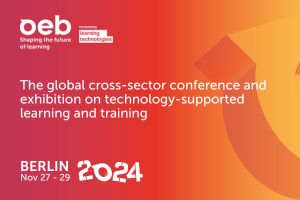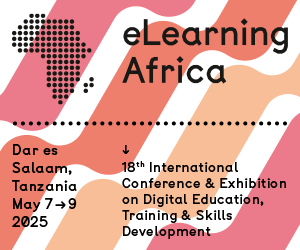Students Are Encouraged to Use Their Mobile Devices
 Paris (F), November 2014 - Thierry Koscielniak is Executive Director of the eLearning & Academic Support Office (ICT for Education) at the Paris Descartes University in Paris, France. As a member of the IT Strategic Steering Board of his university, he plays a role in strategic planning and policy development for information system, infrastructure, and programs. At ONLINE EDUCA, he will present "Interactive Lectures with Moodle and Students' Devices: BYOD at Paris Descartes University" in the session MDI09 on 04 December 2014 from 12:00 to 13:30.
Paris (F), November 2014 - Thierry Koscielniak is Executive Director of the eLearning & Academic Support Office (ICT for Education) at the Paris Descartes University in Paris, France. As a member of the IT Strategic Steering Board of his university, he plays a role in strategic planning and policy development for information system, infrastructure, and programs. At ONLINE EDUCA, he will present "Interactive Lectures with Moodle and Students' Devices: BYOD at Paris Descartes University" in the session MDI09 on 04 December 2014 from 12:00 to 13:30.
How long has the Paris Descartes University been using "bring your own device" (BYOD), and how and to what extent are students able to use their smartphones and tablets?
Thierry Koscielniak: The first experiment with BYOD was in May 2012 during a large biochemistry lecture by Prof Xavier Coumoul for 150 third-year bachelor students. Students were encouraged to use their mobile devices such as laptops, smartphones, and tablets. The mobile-devices ownership rate per student is very high in this College: between 95% and 98%. During the lecture, the devices used were 60% smartphones, 30% laptops, and 10% tablets.
How did the university’s IT infrastructure have to be modified to make this possible?
Thierry Koscielniak: The IT steering committee of the university set up a strategy of deploying new access points or upgrading old ones in lecture halls and classrooms. A 400-seat lecture hall needs between four and six access point, depending of the geometry of the room. In smaller classroom, mobile access points can be used by the teachers with the help of the technical and pedagogical support engineers.
What role does Moodle play in this?
Thierry Koscielniak: Moodle is the tool for the teachers to create interactive quizzes during the lecture. The students may answer during the lecture using their mobile Moodle interface. Web software has also been developed by our team to permit the teacher to remotely control some Moodle features such as showing / hiding the questions. It makes their interaction with the students easier. A current new development will simulate a voting-device interface for the students.
Would BYOD have been implementable with another open source system?
Thierry Koscielniak: Any open source LMS could be used, as long as it permits authentification for a single but anonymous answer from the student. Moodle fits our needs perfectly as the quiz module is comprehensive and the Moodle database can be queried by our web remote control.
What has changed in the University’s instruction since BOYD was introduced?
Thierry Koscielniak: In October 2014, seven colleges out of ten are extending the use of interactive questions during lectures using BYOD. The teachers see an opportunity to perform a dynamic lecture and are increasingly keen to use Moodle.









